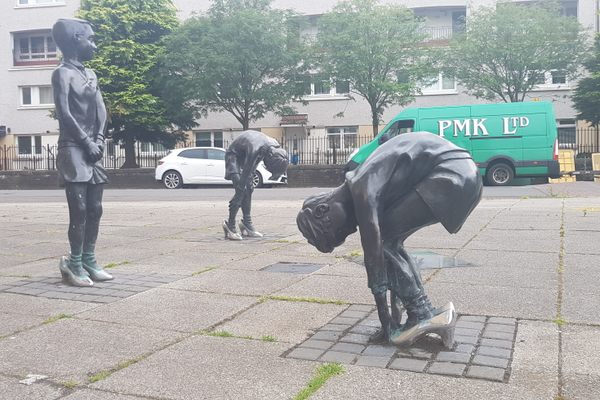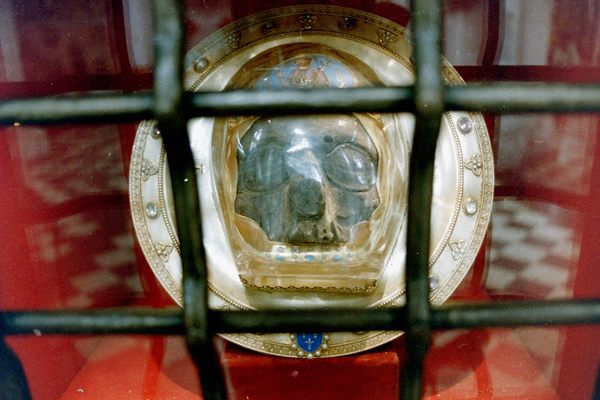St. Valentine’s Bones
Glasgow’s piece of the patron saint of love.
In 1868, a wealthy French family made a donation to the the Franciscan church: a small wooden box labeled “Corpus Valentini Martyris,” or “the Body of Saint Valentine.” The church sent the relic to Saint Francis’ Church, in the neighborhood of Gorbals in Glasgow, where it sat in almost complete anonymity for over a century. In 1999, it was moved to the nearby, Blessed St John Duns Scotus, where it has been given a place of honor at the church’s entrance.
Though there are many stories, not much is known for certain about the man—or men—behind the myth of St. Valentine. The Catholic church recognizes a number of saints known as Valentine, and at least two of them lived in Italy in the 3rd century. Both were executed during the reign of the Roman Emperor Claudius Gothicus. Many years between the deaths of these martyrs and the distribution of their relics, and over time, the stories of these men (and potentially other Valentines) have merged. In 496, Pope Gelasius I made February 14 a feast day dedicated to St. Valentine.
At the church in Glasgow, the relic is decorated with flowers every year for the Feast of St. Valentine, and the friars say prayers for lovers. Though we may not know which Valentine the body belonged to, its presence has led Glasgow to label itself the “City of Love.”






















Follow us on Twitter to get the latest on the world's hidden wonders.
Like us on Facebook to get the latest on the world's hidden wonders.
Follow us on Twitter Like us on Facebook